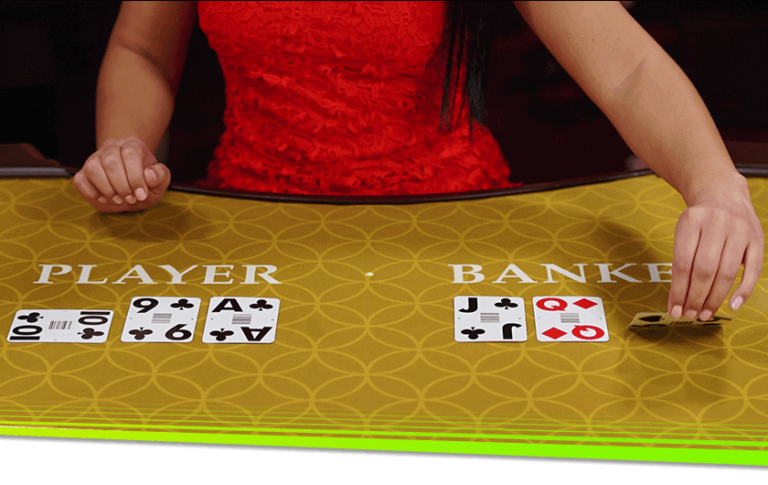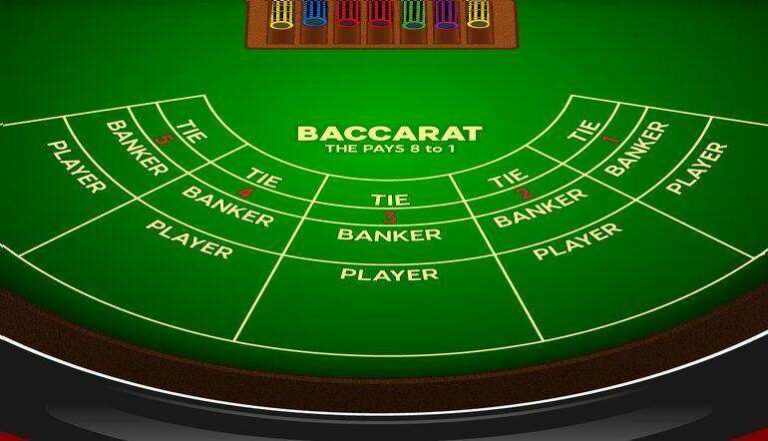
You often hear recreational and amateur players talk about poker as if it was just another gambling game, and like everything in the game is down to luck.
Of course, this could hardly be further from the truth, as poker is a complex game that requires a whole range of skills to be truly successful.
Most players who don’t know the game’s ins and outs think about the game in terms of wins and losses.
They will talk about playing good on a winning night and will lament their luck on a losing one, completely contradicting their own logic between the two.
The truth is that poker is not about winning or losing at all simply because there is nothing you can really do about whether or not you will win in particular spots.
The best you can do is give yourself the best winning chance over and over again, which will inevitably result in winning over the long run since the game is all about math.
- 1

Excellent MTT fundaments and advanced topics
Great structure to keep improving your game
Interactive learning approach with quizzes and homeworks
Score
9.5/10
Show me Review
This brings us to the concept of poker EV, the term used by professional poker players to determine the theoretical value of their decisions in the long run.
If you have heard the pros talk about the decision being “marginally plus EV” and didn’t understand what they were talking about, I am going to explain it in this article.
Keep reading and find out more about poker EV, how poker equity works, and how you can use this knowledge to your advantage in the actual game.
What is Poker EV?
Every hand in poker ends up with one player winning the pot and others losing it (apart from the occasional chopped pot).
However, you should not be looking at the game from this perspective at all.
Before the flop is even dealt, poker hands have a certain value, which can be expressed in percentages. This value is called equity, and it represents the likelihood of a hand winning by showdown.
If you have watched TV poker shows, you have seen these percentages next to players’ cards and have probably noticed that pocket Aces get that 80% mark or higher before the flop is dealt.
This means that pocket Aces have an 80% chance of winning the hand should it go to showdown.
Of course, more betting will come, and players can fold their hands, but understanding poker equity is the first step in understanding the game of poker.
Knowing your exact equity in a hand is usually not possible since you don’t see your opponents’ cards. This is why you must assume your equity based on the potential range of hands your opponents could have.

This becomes easier and easier as the hand develops, as you become more aware of the other players’ potential holdings with every passing street and every bet that is placed.
Note that drawing hands, such as flush and straight draws, also have a certain percentage of equity in every hand, and knowing this equity will allow you to make plays that are justified as you have enough poker EV to make certain calls or raise in certain situations.
What is Expected Value?
Expected value (EV) is a term used to refer to the long-term results of the decisions you make at the tables.
Since the variance in poker can be huge, and it takes a lot of time for it to even out, you can use poker EV to determine if you are actually playing well or not.
Surely you have been in a live poker game where you made a call with a drawing hand, and one player told you that you should have folded while another said it was an easy call.
The truth is that both these players probably didn’t know what they were talking about. Your decision was probably purely mathematical and relatively easy to calculate.
Calculating your EV in particular situations in poker will give you the confidence to play your best possible game and not question your decisions the way recreational players do.
What understanding EV in poker will allow you to do is consistently make profitable decisions, such as the correct calls and folds. This will earn you money and allow you to leave the games as a winner more often.
How to Calculate Poker EV?
Of course, just knowing the expected value exists in poker is not enough. You need to be able to actually calculate your expected value in order to make use of it.
The formula for calculating your poker EV does not require any advanced math but can require some guesswork at times.
Let us consider a simple in-game situation. You are on the river, facing one opponent and holding the absolute nuts. There is $500 in the pot, and you want to decide how much to bet for value.

You are not 100% sure what your opponent has but know that the likelihood of him calling will diminish as you size up your bet.
You may be contemplating between making a small $100 bet, a medium $300 bet, or a big $500 bet in this scenario.
You will need to decide just how likely each bet is to be called in order to calculate your EV. For example:
- $500 bet gets called 20% of the time
- $300 bet gets called 40% of the time
- $100 bet gets called 80% of the time
Now that you have estimated the likelihood of getting called for each bet, you can use the following formula to decide which one is the best:
EV = (chance of winning * the amount you win) + (chance to lose * the amount you lose)
In this situation, you are 100% sure you are not going to lose as you have the nuts, and the pot will come your way in every case, making the chance to lose 0%, for simpler calculation. Here is the math.
- EV1 = (0.2 * $500) + (0.8*$0) = $100 + 0 = $100
- EV2 = (0.4 * $300) + (0.6 * $0) = $120 + 0 = $120
- EV3 = (0.8 * $100) + (0.2 * $0) = $80 + 0 = $80
From working out the math, we can see that the best bet to make in this scenario is $300. Your opponent will fold 60% of the time, and you will make another $120 each time you make this bet on average.
On the other hand, you will make an average of $100 if you make a $500 bet and an average of $80 if you make a $100 bet.
While these calculations are affected by our assumption as to how often the opponent will call the bet, this is the best guess we have on how to best play our hand.

In scenarios like these, you can also make use of exploitative assumptions, such as knowing that a player is very likely to call an overbet assuming you are bluffing or make a smaller bet against an opponent you know is very weak but will still call a small bet just to see your cards.
In every situation in poker, you should always be thinking about what bet sizing will get you paid the most in the long run, not just how good it would be to get a big bet called right now.
Let us take a look at another scenario where things are a bit more complicated.
Once again, we find ourselves with $500 in the pot, only this time we have a draw. We do the calculations and find out that we have 35% equity against our opponent’s range.
Our opponent goes all-in for $500 into the pot of $500, giving us a decision to make. We need to call $500 to win the $1,000 that’s out there. Let’s use the formula to calculate our EV!
- EV = (0.35 * $1,000) + (0.65 * -$500) = $350 – $325 = $25
As you can see, our edge here is very small, but we should still make this call. We will lose $500 most of the time but will win $1,000 just often enough to make the call profitable. Now, let us assume our opponent only had $300 behind to go all-in with.
- EV = (0.35 * $800) + (0.65 * -$300) = $280 – $195 = $85
This time around, we are talking about an easy call that will result in a net profit of $85 each time we make it.
Recreational players tend to make these types of decisions based on their gut, but you should be making them based on the exact formula I have just shown you.
This is the only way you will be making the mathematically correct plays!
Quick Ways to Calculate Your Equity
It sounds so easy when the pros talk about it, but how exactly can you know how much equity you have in a hand of poker?
Well, there is no exact way to know before the cards are flipped over, but there are some things you can assume and then use math to calculate your equity based on them.

For example, let us think about a hand where we are drawing to an open-ended straight. We know we are going to have the best hand if one of our straight cards comes, as we will have the nuts but are almost certainly losing in other cases.
While making a pair will also work for us some of the time in a situation like this, there are some situations in which it is quite apparent our opponent already has a very strong hand, and one pair simply isn’t going to do it.
So, we will win with a straight, but how often is it going to come?
While you could do the calculation each time based on the number of cards working in your favor (your outs) and the remaining cards in the card deck, there is a much simpler way to do it.
The rule of 2 and 4 is used even by elite players to determine their equity. This rule is very simple. If you are drawing on the turn, multiply your outs by 2 and if you are drawing on the flop, multiply your outs by 4.
In the case of our open-ended straight draw, we have eight outs. This would mean we have 32% equity on the flop or 16% equity on the turn, which is very close to the actual percentages.
Knowing the exact percentage to a decimal point won’t be important in helping you make the right plays, which is why the rule of 2 and 4 works so brilliantly and why you should always use it to determine your equity, which, in turn, can help you decide on the EV of certain plays.
What Is Fold Equity and How to Use It?
Now you know how to calculate your hand equity, and this is all you need in some cases, such as when you are contemplating making a call with a drawing hand.
However, poker is not all about making your hand, and sometimes you can bluff your opponents by making bets and raises and making them fold the best hand.
In very simple terms, fold equity is the percentage of the time you believe your opponent will fold their cards if you make a certain bet.

Like before, we know that we can still make our hand, and we know that we have certain pure equity in the hand.
But by making an aggressive play, we can increase our total equity in the hand by making the other player fold his cards and surrender his chunk of the equity.
Of course, betting or raising also means re-opening the action and allowing our opponent to play right back at us with his strong hands, which can be a double-edged sword.
Navigating these situations and knowing when to use our fold equity to apply maximum pressure and when to just call and realize our pure equity is what it takes to maximize our expected value in poker.
I talk about fold equity more in another article, but it is another important concept to keep in mind when considering your overall poker EV.





















